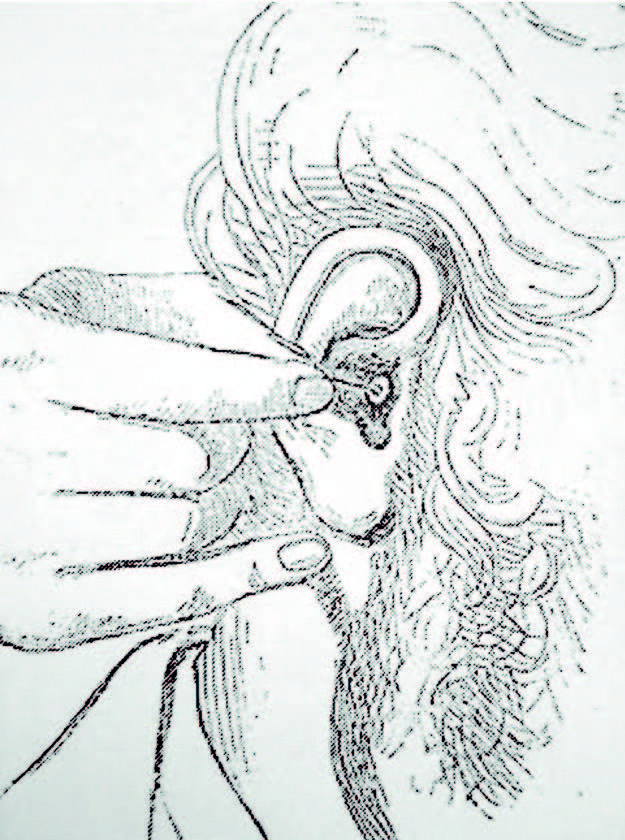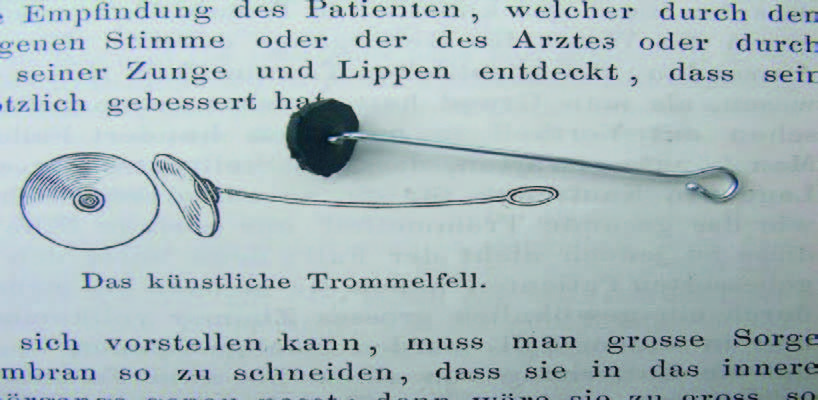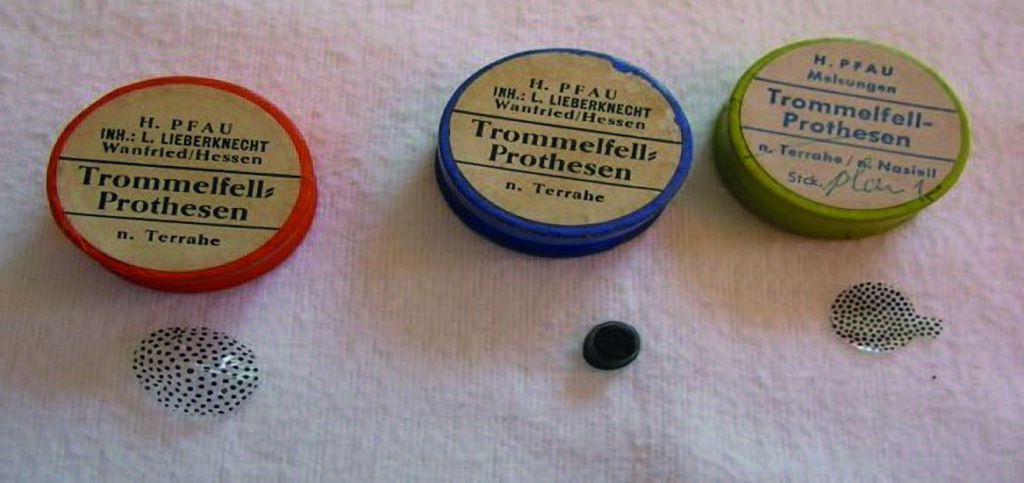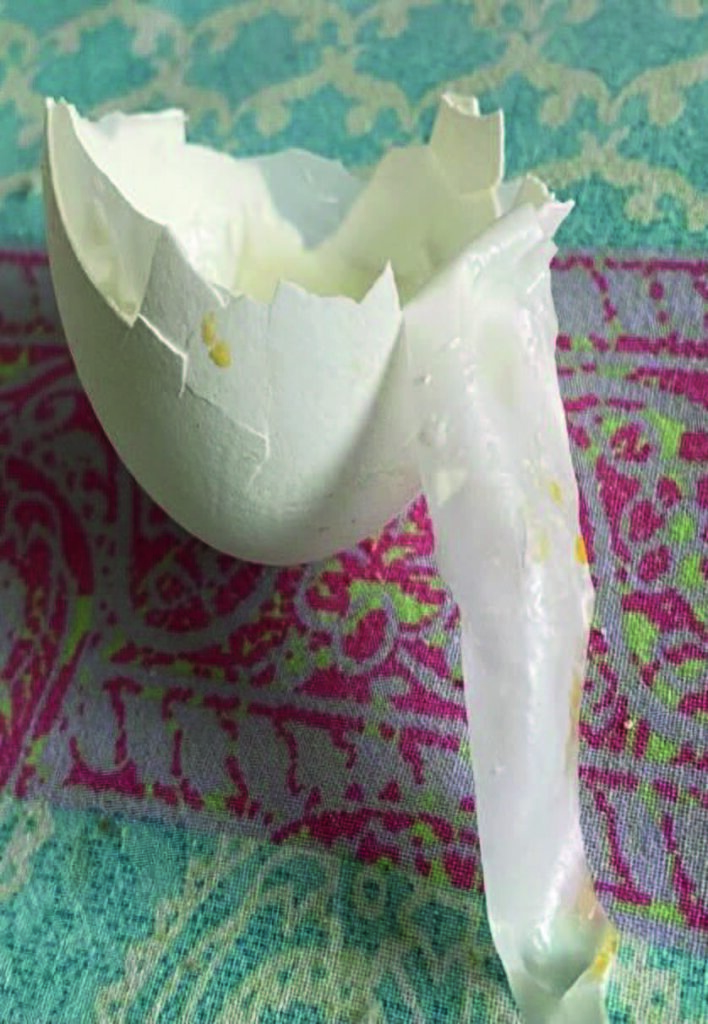The Artificial Eardrum: How an Eggshell Membrane Fed a German ENT Family
HISTORY OF ENT

In the pre-antibiotic era, purulent otitis media often resulted in a permanent eardrum perforation with hearing loss. In addition to pig or fish bladders, eggshell membranes and cigarette paper were used
as eardrum prostheses.
I have vivid personal boyhood memories of how perforated eardrums indirectly supplemented my weekly diet in post-war Germany! My father was an ENT surgeon in Germany after the war and times were tough. Uncomplicated tympanic membrane perforations were commonplace (usually from related to war trauma). These patients were told to bring a freshly boiled hen’s egg to his practice. The egg was
cracked open before their eyes using the finest surgical equipment (Figure 3) and a piece of the eggshell membrane, the size of a fingernail was carefully dissected out. With the help of forehead reflector illumination and fine tweezers, and after ‘refreshing’ the edges of the perforation, this xenograft transplant was then placed over the defect in the tympanic membrane.
The immediate improvement in hearing was worth the pain and compensated the patient for what was in those days, the very precious loss of the egg. Meanwhile, the remainder of the egg was ‘disposed of’ by the assistant in the next room – me! Once a week, depending on the workload, we enjoyed so-called ‘Russian Eggs’ (boiled eggs with mustard and potatoes). What a celebration! Cigarettes too had a
certain black market value, and cigarette paper was also used to seal eardrum perforations.
Graft materials had been used since 1853, when Toynbee used a rubber disc attached over a silver wire, which resulted in a hearing improvement when placed over a perforation. Although the surgical
instrument manufacturer John Weiss produced 17,900 of these prostheses, they were never successful beyond the United Kingdom (Figure 1). This was probably because they had not yet received the seal
of approval from the great teacher of our subject, Adam Politzer of Vienna. Also otology was not considered important in continental Europe at that time (the so-called ‘insignificance of otiartria’).
The possibility of closing a tympanic perforation and at least achieving a temporary hearing gain, was widely ignored until the Vienna School accepted this operation (which had been known empirically for a long time). It then became widely used.
In 1878, Emil Berthold from Königsberg first attempted to cover perforations in the eardrum with skin from the upper arm. He coined the term ‘myringoplasty’ for his procedure. Unfortunately, these early
attempts were not very successful. He experimented in vain until 1885. Then he thought he had found the right material, when he utilised the inner membrane of a hen ́s eggshell. Later (1889) Haug, then
an assistant doctor in Munich, found that using the shell side of the egg membrane
was more successful than the protein side.
In the 1950s, in the continuing search for suitable materials, both cut-up surgical gloves or rubber finger cots were used. This was succeeded by industrially prefabricated plastic membranes. Finally the pioneering work of Moritz, Zöller and Wullstein introduced the triumphant march of the surgical methods of tympanoplasty. This standardised the treatment of central and peripheral eardrum perforations.
A good method of demonstrating the potential expected hearing gain before a ‘type I tympanoplasty’, would be temporarily closing the perforation in outpatient clinic by the simple expedient of using a glycerin cotton ball. Consent to the operation was usually then given automatically.
Reference
- Toynbee J. On the Use of an Artificial Membrane Tympani Cases of Deafness Dependent Upon Perforations or Destruction of the Natural Organ. London: J Churchill & Sons; 1853.




